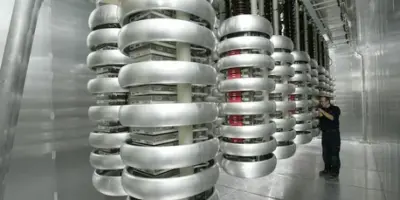LED Epitaxy Susceptor Market Overview
The LED (Light Emitting Diode) epitaxy susceptor market is a crucial segment within the broader LED industry, which has witnessed remarkable growth in recent years. Epitaxy is a key process in LED manufacturing, involving the deposition of semiconductor materials layer by layer on a substrate to create the active region of the LED. The epitaxy susceptor serves as a platform for holding and heating the substrate during the deposition process, playing a critical role in ensuring the quality and performance of LED chips. This comprehensive overview will delve into various aspects of the LED epitaxy susceptor market, including market dynamics, key players, technological advancements, growth drivers, challenges, and future prospects.
Market Dynamics
The LED epitaxy susceptor market is driven by several factors, including the growing demand for energy-efficient lighting solutions, advancements in LED technology, increasing investments in research and development, and government initiatives promoting the adoption of LED lighting. Additionally, the proliferation of applications such as general lighting, automotive lighting, backlighting for displays, and horticultural lighting has fueled the demand for high-performance LED chips, thereby driving the need for advanced epitaxy susceptor solutions.
Key market dynamics include:
- Technological Advancements: Continuous innovation in epitaxy susceptor design, materials, and manufacturing processes is essential for meeting the evolving requirements of LED manufacturers. Technological advancements such as improved thermal management, enhanced uniformity of film deposition, and compatibility with different substrate sizes and materials contribute to the growth of the market.
- Demand for High-Quality LED Chips: LED manufacturers prioritize the production of high-quality chips with superior performance characteristics such as efficiency, brightness, color accuracy, and reliability. The epitaxy susceptor plays a crucial role in achieving uniform film deposition, precise control of epitaxial growth parameters, and minimizing defects, thereby ensuring the desired quality of LED chips.
- Cost Optimization: Cost remains a significant consideration for LED manufacturers, driving the demand for epitaxy susceptor solutions that offer a balance between performance and affordability. Manufacturers are exploring cost-effective materials, manufacturing techniques, and process optimization strategies to reduce production costs and enhance competitiveness in the market.
- Regulatory Landscape: Stringent regulations aimed at promoting energy efficiency and reducing carbon emissions have encouraged the widespread adoption of LED lighting worldwide. Government initiatives such as energy efficiency standards, subsidies for LED lighting projects, and phase-out of inefficient lighting technologies contribute to the growth of the LED epitaxy susceptor market.
Technological Advancements
The LED epitaxy susceptor market is witnessing continuous technological advancements aimed at improving process efficiency, yield, and quality of LED chips. Key technological trends include:
- Advanced Thermal Management: Effective thermal management is critical for maintaining uniform temperature distribution across the substrate during epitaxial growth, minimizing thermal stress, and enhancing the quality of LED chips. Advanced susceptor designs with optimized heating elements, temperature control systems, and thermal insulation materials improve process stability and yield.
- Uniform Film Deposition: Achieving uniform film deposition is essential for producing LED chips with consistent optical and electrical properties. Advanced susceptor designs with precise gas flow control, substrate rotation mechanisms, and in-situ monitoring enable uniform distribution of semiconductor materials, reducing defects and improving chip performance.
- Multi-Wafer Processing: Increasing demand for high-volume LED production has driven the development of multi-wafer epitaxy susceptor platforms capable of processing multiple substrates simultaneously. Multi-wafer systems offer higher throughput, improved productivity, and cost-effective manufacturing solutions for LED chip manufacturers.
- Integration of Smart Technologies: The integration of smart sensors, real-time monitoring systems, and advanced process control algorithms within epitaxy susceptor platforms enhances process visibility, control, and optimization. Smart susceptor solutions enable proactive maintenance, fault detection, and process parameter adjustments, leading to improved yield and reduced downtime.
Receive the FREE Sample Report of LED Epitaxy Susceptor Market Research Insights @ https://stringentdatalytics.com/sample-request/led-epitaxy-susceptor-market/7942/
Market Segmentations:
Global LED Epitaxy Susceptor Market: By Company
• Toyo Tanso
• SGL Carbon
• Tokai Carbon
• Mersen
• Bay Carbon
• CoorsTek
• Schunk Xycarb Technology
• ZhiCheng Semiconductor
Global LED Epitaxy Susceptor Market: By Type
• Graphite Susceptor
• SiC Coated Graphite Susceptor
Global LED Epitaxy Susceptor Market: By Application
• GaN
• InP
• Other
Regional Analysis of Global LED Epitaxy Susceptor Market
All the regional segmentation has been studied based on recent and future trends, and the market is forecasted throughout the prediction period. The countries covered in the regional analysis of the Global LED Epitaxy Susceptor market report are U.S., Canada, and Mexico in North America, Germany, France, U.K., Russia, Italy, Spain, Turkey, Netherlands, Switzerland, Belgium, and Rest of Europe in Europe, Singapore, Malaysia, Australia, Thailand, Indonesia, Philippines, China, Japan, India, South Korea, Rest of Asia-Pacific (APAC) in the Asia-Pacific (APAC), Saudi Arabia, U.A.E, South Africa, Egypt, Israel, Rest of Middle East and Africa (MEA) as a part of Middle East and Africa (MEA), and Argentina, Brazil, and Rest of South America as part of South America.
Click to Purchase LED Epitaxy Susceptor Market Research Report @ https://stringentdatalytics.com/purchase/led-epitaxy-susceptor-market/7942/
Growth Drivers
- Increasing Adoption of LED Lighting: The widespread adoption of LED lighting across various applications such as residential, commercial, industrial, and automotive sectors drives the demand for high-performance LED chips, thereby boosting the market for epitaxy susceptor solutions.
- Government Initiatives: Government initiatives aimed at promoting energy efficiency, reducing carbon emissions, and phasing out incandescent and fluorescent lighting technologies contribute to the growth of the LED market and, consequently, the demand for epitaxy susceptor solutions.
- Advancements in LED Technology: Continuous advancements in LED technology, including improvements in efficiency, brightness, color rendering, and reliability, fuel the demand for advanced epitaxy susceptor solutions capable of meeting the evolving performance requirements of LED chips.
- Growing Investments in Research and Development: Increased investments in research and development activities focused on enhancing epitaxial growth processes, optimizing material properties, and developing novel susceptor technologies drive innovation in the LED epitaxy susceptor market.
Challenges
- Technological Complexity: The epitaxy process is complex and requires precise control of multiple parameters such as temperature, gas flow, pressure, and substrate orientation. Developing susceptor solutions that meet the stringent performance requirements of LED manufacturers while ensuring ease of operation and maintenance poses a challenge for suppliers.
- Cost Pressures: LED manufacturers operate in a highly competitive market with thin profit margins, driving the need for cost-effective epitaxy susceptor solutions. Balancing performance, reliability, and affordability while maintaining profitability remains a challenge for susceptor manufacturers.
- Supply Chain Disruptions: The LED industry is susceptible to supply chain disruptions caused by factors such as geopolitical tensions, trade disputes, natural disasters, and pandemics. Ensuring a resilient supply chain and mitigating risks associated with raw material shortages, transportation delays, and production interruptions are critical for susceptor suppliers.
- Environmental Regulations: Compliance with environmental regulations governing the use of hazardous materials, waste management, and energy consumption poses challenges for susceptor manufacturers. Developing sustainable solutions that minimize environmental impact while meeting performance requirements remains a priority for the industry.
Future Prospects
This market is expected to witness significant growth in the coming years, driven by the increasing adoption of LED lighting, advancements in LED technology, and growing investments in research and development. Key growth prospects include:
- Emerging Applications: The expansion of applications such as automotive lighting, horticultural lighting, UV disinfection, and specialty lighting presents new opportunities for the LED industry and, consequently, the epitaxy susceptor market.
- Technological Innovations: Continued innovation in epitaxy susceptor design, materials, and manufacturing processes will drive improvements in process efficiency, yield, and quality of LED chips, supporting the growth of the market.
- Regional Expansion: The LED market is witnessing strong growth in emerging economies such as China, India, Southeast Asia, and Latin America, driven by urbanization, infrastructure development, and government initiatives promoting energy efficiency. Expanding market presence in these regions presents growth opportunities for susceptor manufacturers.
- Vertical Integration: Vertical integration of LED manufacturing operations, including epitaxy, chip fabrication, packaging, and assembly, enables companies to streamline production processes, optimize supply chains, and enhance competitiveness in the market. Vertical integration trends are expected to influence the epitaxy susceptor market as LED manufacturers seek to consolidate their operations and improve efficiency.
In conclusion, this market plays a pivotal role in the production of high-quality LED chips, supporting the growth of the LED industry worldwide. With technological advancements, increasing demand for energy-efficient lighting solutions, and expanding applications, the market presents significant growth opportunities for susceptor manufacturers. However, addressing challenges such as technological complexity, cost pressures, supply chain disruptions, and environmental regulations is essential for sustainable growth and competitiveness in the market. Continued innovation, strategic partnerships, and market expansion efforts will be key to success in the dynamic and competitive LED epitaxy susceptor market.
About Stringent Datalytics
Stringent Datalytics offers both custom and syndicated market research reports. Custom market research reports are tailored to a specific client’s needs and requirements. These reports provide unique insights into a particular industry or market segment and can help businesses make informed decisions about their strategies and operations.
Syndicated market research reports, on the other hand, are pre-existing reports that are available for purchase by multiple clients. These reports are often produced on a regular basis, such as annually or quarterly, and cover a broad range of industries and market segments. Syndicated reports provide clients with insights into industry trends, market sizes, and competitive landscapes. By offering both custom and syndicated reports, Stringent Datalytics can provide clients with a range of market research solutions that can be customized to their specific needs.
Reach US
Stringent Datalytics
+1 346 666 6655
Social Channels:




Leave a Reply